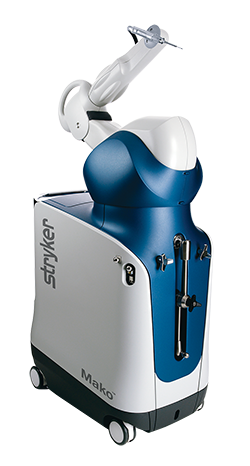When pain, stiffness, and limited range of motion in your knee keep you from your daily activities, you may need a knee replacement. For patients with osteoarthritis, the most common source of debilitating knee pain, the goal of knee replacement is to restore function and decrease pain. A partial knee replacement (or unicompartmental knee replacement) is an option for patients with osteoarthritis in just one part of the knee. Unlike total knee replacement surgery, this less invasive procedure replaces only the damaged or arthritic parts of the knee.
According to the American Academy of Orthopedic Surgeons (AAOS), multiple studies have shown that partial knee replacement performs very well in the vast majority of patients who are appropriate candidates. Advantages over full knee replacement include quicker recovery, less pain, and less blood loss.
Knee Anatomy
The knee functions as a hinge joint. The joint is made from the end of the thigh bone (femur), where it meets the shin bone (tibia), and the knee cap (patella). Normally, the cartilage coating over the bones makes the joint move smoothly and provides an additional shock-absorbent cushion. In an arthritic knee, the cartilage surface wears out and begins rubbing bone on bone which causes joint pain, stiffness, and swelling of the knee joint.
The knee is divided into three major compartments: the medial compartment (the inside part of the knee), the lateral compartment (the outside part), and the patellofemoral compartment (the front of the knee between the kneecap and thighbone). In a partial knee replacement, only the damaged compartment is replaced. The healthy cartilage and bone in the rest of the knee remain intact.
Evaluation
Your doctor may recommend joint replacement surgery if conservative treatment methods have not relieved your knee pain or allowed you to continue with daily activities. An orthopedic surgeon will give you a thorough evaluation that includes your medical history, a physical exam to test range of motion, ligament, and muscle strength, and to identify the source of the pain. He or she will order imaging tests such as x-ray or MRI to see where the arthritis is and to evaluate the cartilage. A good candidate for partial knee replacement will only have osteoarthritis in one compartment of the knee.
Mako Robotic-Arm Assisted Surgery
Mako Robotic-Arm Assisted Technology can be used for partial knee replacements. It provides patients with a personalized surgical plan based on your unique knee anatomy. By accurately targeting the damaged part of your knee and leaving the healthy, unaffected parts intact, your knee is able to move smoothly and without pain again.
How Mako Robotic-Arm Assisted Surgery works:
1. Personalized Plan
A CT scan is used to generate a three dimensional virtual model of your knee anatomy. This virtual model is loaded into the MAKO robotic-arm software for your orthopedic surgeon to create your personal pre-operative plan.
2. Operating Room
Using your personalized pre-operative plan, the surgeon guides the robotic arm within the pre-defined area and helps prevent the surgeon from moving outside the boundaries. This allows your surgeon to align, position, and secure the knee implant with extreme accuracy.
3. After Surgery
After surgery you will be taken to the recovery room, where you will remain until you have recovered from the anesthesia, are breathing well, and your blood pressure and pulse are stable. You will begin putting weight on your knee immediately after surgery. A walker, cane, or crutches will be necessary at first until you gain strength. Your physical therapist will give you exercises to help maintain range of motion and restore strength. You will continue to see your orthopedic surgeon for follow-up visits until you are able to return to normal activities.
